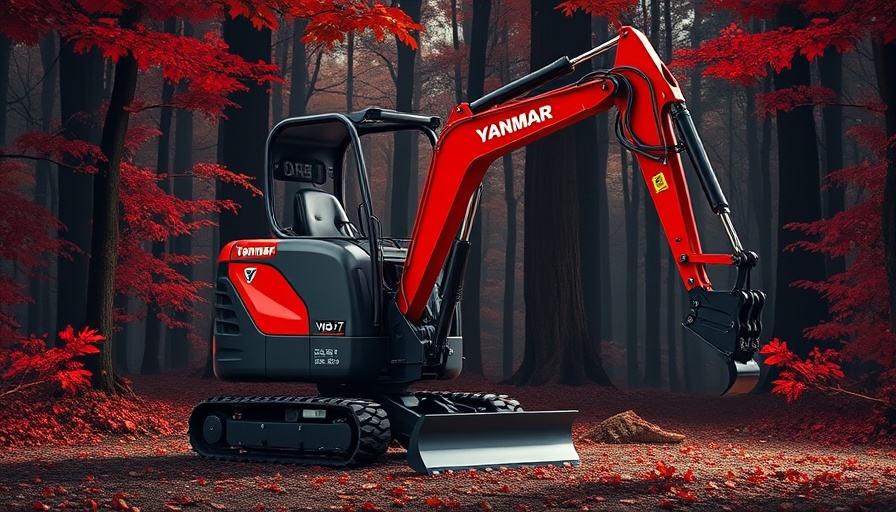
Unleashing Compact Power: The Yanmar ViO35-7 Mini Excavator
In an era where versatility and efficiency define construction machinery, the Yanmar ViO35-7 mini excavator emerges as a game changer. With a robust 24.4-horsepower engine housed in a compact weight of just 7,882 pounds, this machine is designed for a range of light construction, utility, and landscaping tasks.
Zero Tail Swing Functionality: Maneuvering with Ease
The standout feature of the ViO35-7 is its zero-tail-swing design. This allows operators to work in tight spaces without worrying about the excavator bumping into obstacles. Whether you’re digging near a building or navigating crowded job sites, this functionality ensures that performance is not sacrificed for stature.
Innovative Hydraulic System for Multi-function Performance
Equipped with a three-pump, flow-sharing hydraulic system, the ViO35-7 excels in multi-function performance. This is particularly beneficial in tasks that require simultaneous operations, such as digging while lifting materials—a common need in the fast-paced construction world. This innovative technology not only enhances productivity but also reduces the time spent on tasks, allowing for quicker project turnaround.
Cab Design: Comfort Meets Efficiency
The interior of the ViO35-7 has been designed with operator comfort and efficiency in mind. The redesigned cab boasts 360-degree visibility, a spacious layout, and comes equipped with a 4.3-inch color display. These features empower operators to not only enjoy a more comfortable workday but also make quicker adjustments with five customizable attachment settings that can be controlled directly from the display panel.
Maintenance Made Easy: Keeping Your Investment in Top Shape
One of the biggest concerns for contractors is machinery maintenance. With Yanmar's ViO35-7, critical components are protected by standard guarding, and all key maintenance points are easily accessible at ground level. This design consideration streamlines maintenance processes, reducing downtime and extending the lifespan of the machine.
Smart Technology and Warranty Support
In addition to its impressive physical features, the ViO35-7 is outfitted with Advanced SmartAssist Remote telematics. This allows owners to take advantage of real-time data analytics, geo-fencing, and preventative service scheduling. Knowing exactly when maintenance is due or when issues may arise can save contractors time and money, and ensure that the machine operates seamlessly on job sites. Furthermore, Yanmar backs this mini excavator with a generous 4-year/4,000-hour warranty, providing added peace of mind.
Comparing Models: The ViO35-7 in the Yanmar Lineup
The ViO35-7 isn’t Yanmar's only innovative machine. It exists alongside other heavyweights in Yanmar's -7 lineup, including the ViO80-7 and the substantial SV100-7. Each model offers unique specifications tailored for different levels of power and task requirements. This extensive lineup allows contractors to select the right equipment for their specific needs, ensuring that they always have the right power tool at their disposal.
Why the Yanmar ViO35-7 Is Essential for Contractors
The Yanmar ViO35-7 mini excavator proves to be an essential tool for modern contractors who need power, compactness, and adaptability. From its user-friendly features that enhance operator comfort to its advanced telematics that streamline maintenance, this excavator aligns perfectly with the needs of today’s construction landscape.
Conclusion: Power Beyond Size
With its ability to handle demanding tasks while fitting into compact spaces, the Yanmar ViO35-7 demonstrates a perfect balance of power and utility. For contractors seeking efficiency and reliability in their equipment, this mini excavator is a worthy investment. Stay informed about the latest innovations in construction equipment to ensure your contractors can demonstrate expertise and streamline their project execution.
 Add Row
Add Row  Add
Add 




Write A Comment